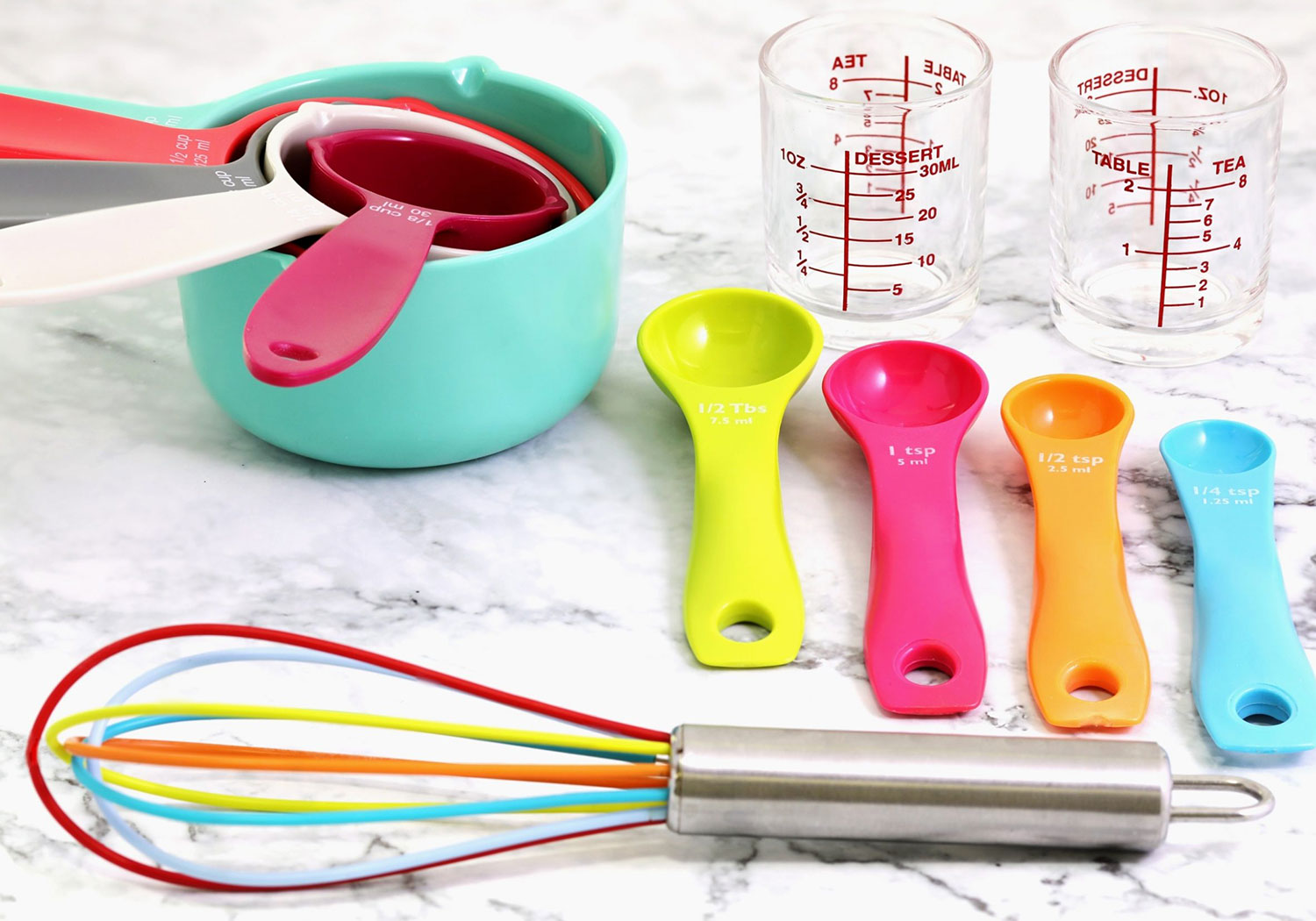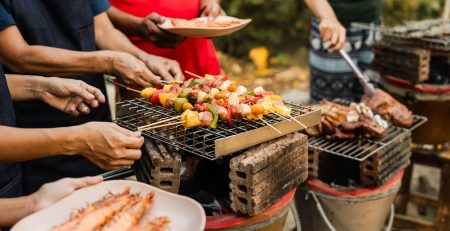Measuring Techniques For Baking
- Flour: Always use a large spoon to lightly spoon the flour from its container into the measuring cup. Do not shake the cup while doing this, and do not pack the flour. Using the back of a knife or flat-blade spatula, level off the flour even with the top edge of the measuring cup. Don’t use the measuring cup to scoop the flour out of the container. You can end up with more of the correct measurement by using the cup! One cup of correctly measured flour should weigh about 120 to 125 grams.
- Baking Powder and Baking Soda: Stir in the container. Using the measuring spoon, lightly scoop out of the container. Use that knife to level off even with the top edge of the measuring spoon.
- Sugar: Sugar is measured by scooping the cup or measuring spoon into the container or bag until it is overflowing, then leveling off with the back of a knife.
- Brown Sugar: This needs to be packed into the measuring cup. The sugar should retain the shape of the cup when it is dropped into the other ingredients.
- Powdered Sugar: Powdered sugar usually needs to be sifted to remove small lumps. It is measured by spooning the sugar into the measuring cup from the container, then leveling off with the back of a knife.
- Liquid Ingredients: Liquids need to be measured at eye level. Using the liquid measuring cups, pour the liquid into the cup. Then bend over so that you are on the same level as the measuring marks. The liquid should be right at the mark and not above or below.
- Semi-Liquid Ingredients: Ingredients like sour cream, peanut butter, and yogurt are measured using dry measuring cups because they are too thick to be accurately measured in the liquid cups. Level off the sour cream and peanut butter with the back of a knife.
- Shortening and Solid Fats: Butter and margarine have measuring amounts marked on the sides of the paper wrapping. One quarter-pound stick of butter or margarine equals 1/2 cup. Solid shortening is measured by packing it into a cup so that there are no air spaces, then leveling off with the knife. To easily remove fats from baking cups, spray them with a nonstick cooking spray before measuring. You can also use the liquid displacement method for measuring solid fats. For instance, if you want 1/2 cup of shortening, fill a liquid measuring cup with 1/2 cup of cold water. Then add shortening until the water level reaches 1 cup when you look at it at eye level. Pour out the water and use the shortening. Oil is measured as a liquid.
- Liquid Ingredients in Spoons: Ensure that you don’t measure small amounts of liquid ingredients over the mixing bowl. Consider these classic spoons for your mixing needs). It’s too easy to spill, and you don’t want two teaspoons of almond extract when the recipe only calls for one teaspoon!
- Dry Ingredients in Spoons: Ingredients measured in these small amounts still have to be measured carefully. Overfill the measuring spoons and level off using the back of a knife for the most accurate amount. Accurate amounts of ingredients like baking soda and powder are critical to the success of any baked product.
- Chopped Ingredients: Pay close attention to whether or not an ingredient is to be chopped, diced, or minced, and whether they are measured before chopping or after. Then the foods are placed in the measuring cup so that the top is level with the surface.







